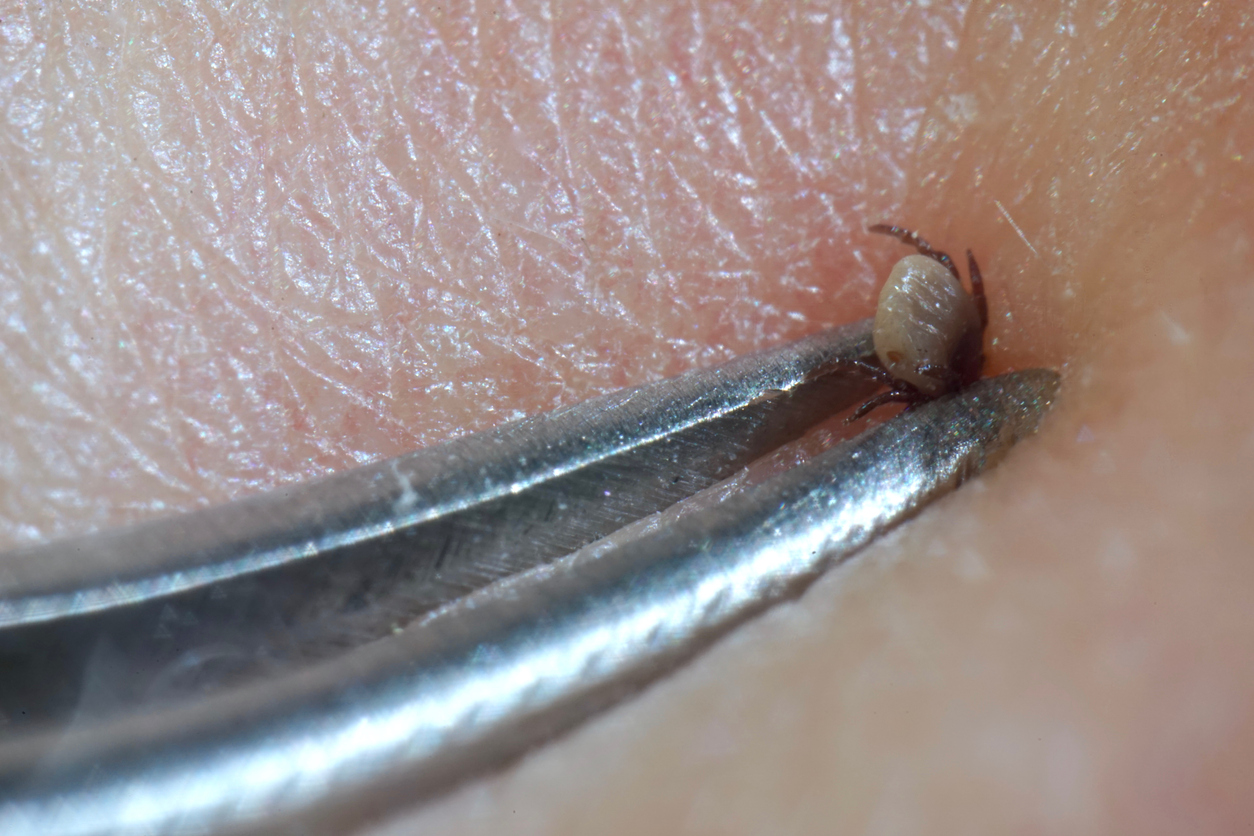- For some good information on chiggers, click here.
- Tick information from Purdue University, click here (PDF).
- Printable brochure - Ticks and the Diseases They Carry.
- Click HERE for good information on many types of insect pests, including how to rid them from your home and property.
About fifteen different species of ticks occur in Indiana. Of these, only three species are normally encountered by people and their pets. These are the American dog tick, Dermacentor variabilis; the lone star ticks, Amblyomma americanus; and the black-legged tick, Ixodes scapularis, (also known as the deer tick or the Lyme disease tick).
Adult ticks over-winter in Indiana, meaning winter temperatures do not kill them. The majority of ticks attached to people during the spring and summer in Indiana are American dog ticks; the second most common species is the lone star tick. The black-legged tick, unknown in Indiana before 1987, is becoming established in more Indiana counties. The remaining ticks are found almost exclusively on wild animals and are only rarely encountered by people.
HOW TO AVOID TICK BITES
The best way to avoid tick bites is to stay out of tick-infested areas, especially during the height of the tick season -- April, May, and June. This is not always possible, so use these precautions:
- wear long pants and a long-sleeved shirt
- tuck the shirt into the pants, and the pants into the socks
- apply insect repellants to clothing to further reduce the incidence of tick bites (ALWAYS follow directions for use on the label)
- conduct thorough "tick checks" immediately after leaving a tick-infested area. Inspect the entire body and promptly remove any ticks found. Prompt removal of attached ticks may reduce the risk of disease transmission.
HOW TO REMOVE TICKS
 With a pair of tweezers, grasp the tick as close to the skin as possible and pull upward with a slow, even force.
With a pair of tweezers, grasp the tick as close to the skin as possible and pull upward with a slow, even force.
DO NOT JERK OR TWIST THE TICK. This might tear the head and mouthparts from the tick's body.
DO NOT USE YOUR FINGERS TO REMOVE THE TICK. Squeezing the tick could cause it to disgorge the contents of its body into the wound.
DO NOT ATTEMPT TO REMOVE THE TICK WITH CAUSTIC CHEMICALS (such as nail polish remover) OR HEAT. This can kill it before it disengages its mouthparts. It can also cause the tick to regurgitate into the wound, increasing the likelihood of transmitting a pathogen.
WASH THE ATTACHMENT SITE with warm soapy water and rubbing alcohol to remove any pathogens.
Removed ticks should be saved in a zip-top bag labeled with the date and the geographical location where the tick was picked up, and placed in the freezer.
This information will aid the doctor if an illness should develop.
